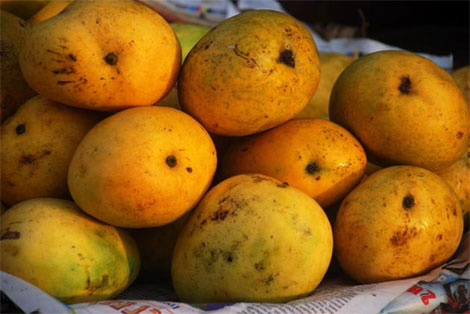These mangoes have no taste! Alert about carbide stone mangoes!
Posted on: 12/May/2015 10:10:07 AM

With the onset of summer, it’s a common scene to find mangoes all the way for sale on most of the roads you pass by. That easily attracts your taste buds and invite you to purchase, and you do too. At the same time, people are also scared and skeptical about purchasing these yellow juicy pulps as most of these are ripened using carbide stones.
How is mango ripened with carbide stone?
First of all, carbide stones are sourced from welding industries. These stones are wrapped up in papers and placed amidst mangoes to catalyze ripening process. This can very easily bring the golden yellow color that appeals buyers. As per Indian food safety and standards act, this is a banned method of ripening a fruit.
Calcium carbide gives out acetylene and ripens mango which means the color of mango is changed. Such mangoes will appeal you only with its look, but not taste. These will not have any taste of sweetness. Furthermore, it has harmful efforts on your body too.
However, these artificially ripened mangoes are easily identifiable.
· These mangoes will have more number of black dots
· These will feel hot on touching
· The skin part alone will look ripened sporting a yellow color
· When the mango is cut, it will look raw
· Above all, these will not have the real natural taste of mangoes!
· Furthermore, such mangoes will get spoilt in just two days







